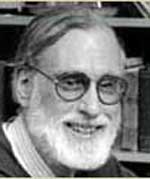Cranston on Lady Kasa
MYS 0597-0600
As Translated by: Edwin A Cranston: A Waka Anthology (v1, 1993)
An illustration for: Nine Maxims On Translation
E Bruce Brooks / University of Massachusetts / 5 Dec 2002
[The portions of these translations corresponding to the thematic line "koi-wataru ka mo" in Lady Kasa's set of twenty-four poems are here shown in red for easier technical comparison].
MYS 0597 (#11)
(5 + 7 / + 4 + 8 + 7, unrhymed)
In the world of men
everywhere the eyes are thick:
Near though you are,
A step across a bridge of stones,
I pass my days in yearning.MYS 0598 (#12)
(5 + 7 / + 6 + 7 + 6, unrhymed)
From yearning also
People have been known to die:
A waterless river,
Underneath I waste for you
By month and day and hour.MYS 0599 (#13)
(5 + 8 / + 5 + 8 + 6, unrhymed)
For a man I saw
As vaguely as the morning mist -
Yes, for that one glance
I am about to lose my life
With this ceaseless yearning!MYS 600 (#14)
(5 + 7 + 5 / + 7 + 7, unrhymed)
On the stony strand
The wild waves of Ise Sea
Crash with their thunder:
Awesome is my highborn love,
For whom this ceaseless yearning!
Here, the repeated koi-wataru lines, though no two of them are precisely identical, are where they ought to be in the respective poems. There are other graces as well: koi[-wataru] "yearning" at the end of #11 is picked up in the first line of #12 as koi "yearning," and, within #13, the waves of Ise with their "thunder" adjoin and reinforce the "awesomeness" of the loved one. The shift in the division point is also followed: it is after line 2 in the first three poems, but in the more cadential position after line 3 in the fourth. This device of sectional cadencing is not used consistently in the whole set of twenty-four, but sufficiently often to suggest that it may have been in the mind, or somewhere in the sensibility, of the poet.
All materials posted on this site are Copyright © by the respective authors.
5 Dec 2002 / Contact The Project / Exit to Lectures Page
